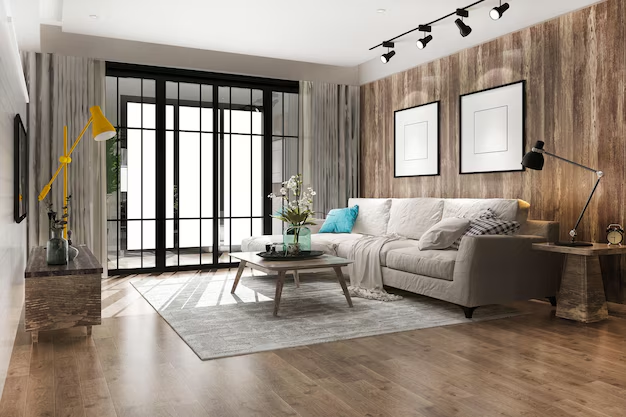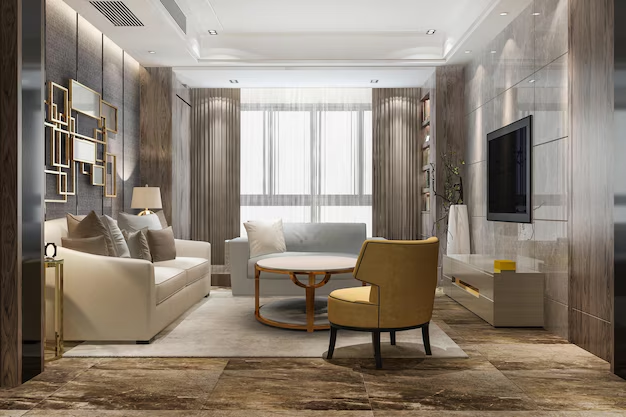Designing a living room is an intricate process that blends creativity with functionality. The living room is often the home’s heart. It is for relaxation, socializing, and sometimes, entertainment. Thus, creating a balanced design requires careful thought. You must consider elements like layout, color schemes, furniture, lighting, and accessories. Designing a living room for a small apartment or a grand home? Basic knowledge in interior design is required. They are key to creating a space that is both personal and practical.
Understanding the Role of Drawing in Living Room Design
When discussing living room design, it’s essential to know that drawing is more than a simple representation of space. It is a way to explore. It lets one experiment with different layouts, furniture arrangements, and decor. Drawing lets you spot design problems before they happen. You can solve them on paper, before they arise in reality.
The Importance of Planning and Sketching
Before diving into any interior design project, thorough planning is necessary. Drawing is a key component of this planning phase. Whether you’re a pro or a DIY homeowner, a visual helps clarify your ideas.
- Conceptual Sketches: These are the earliest forms of drawing used in the design process. In drawing a living room design, conceptual sketches are freehand. They roughly depict the layout, furniture placement, and design theme. They are often loose, with the primary goal of getting ideas down on paper quickly.
- Floor Plans: Once the conceptual sketch takes form, a floor plan can be drawn to scale. This type of drawing is essential when planning the dimensions of your living room. It helps ensure that furniture will fit appropriately within the space. A thorough floor plan takes into account the elements of each room, including windows and entrances.
- Elevations: While a floor plan gives a bird’s-eye view of the layout, an elevation drawing shows a vertical perspective of the living room. This type of drawing is crucial for planning wall treatments, artwork placement, shelving, and cabinetry.
- Perspective Drawings: They are invaluable for visualizing the living room. They capture depth. These drawings show, in a realistic way, how the living room will look from inside it. They reveal the spatial relationships between objects.

The Aesthetic Balance: Symmetry and Asymmetry
Another key point in drawing living room designs is balancing symmetry and asymmetry. Symmetry feels orderly and formal. A feeling of asymmetry might be more lively and carefree.
Symmetrical Design
In a symmetrical living room, the furniture and decor are balanced and mirrored. Two identical sofas, facing each other, flanked by matching lamps, create a harmonious layout. Drawing this symmetrical balance in the design process ensures that the room will have a formal and elegant appearance.
Asymmetrical Design
On the other hand, asymmetrical design allows for a more casual and eclectic style. For instance, you might draw a large sofa on one side of the room and balance it with two smaller chairs on the other. The key to successful asymmetry is maintaining visual balance without strict uniformity.
Incorporating Technology in Living Room Design
Modern living rooms often need to fit many tech devices. These consist of smart lighting controls and entertainment systems. About drawing living room design must include provisions for these technologies.
Entertainment Center Design
A common tech feature in a living room is the TV or home entertainment system. When drawing the layout, consider how this technology will be integrated into the room without overwhelming it. This could mean drawing a recessed wall for a flat-screen TV. Or, it could mean using a custom media center that hides the wires and equipment.
Smart Lighting and Sound Systems
Smart lighting and sound systems are in vogue in today’s living rooms. Include smart controls, like touch panels and wireless speakers. They are modern conveniences. This will ensure they fit into the overall plan. It should not hurt the room’s look.
Defining the Focal Point
The focal point of the living room serves as the anchor of the space. It draws attention and provides a visual center around which other design elements can be arranged. Common focal points in living rooms include fireplaces, large windows with stunning views, or a piece of art.
If the room lacks a natural focal point, one can be created with strategic furniture placement or through the use of a statement piece. A large, bold painting, for example, can serve as the centerpiece, or a striking light fixture can command attention. The goal is to ensure that the room feels cohesive, with each element leading the eye towards the focal point.
Color Schemes: Crafting the Atmosphere
A living room’s color scheme greatly influences the ambience and mood of the space. Colors have the power to evoke emotions and set the tone of a space. In living room design, the selection of colors should be harmonious and reflective of the overall design goals.
Neutral tones such as beige, gray, and white are timeless choices that provide a calming backdrop. These colors also allow for greater flexibility in terms of accent pieces and accessories. If a more vibrant look is desired, accent walls or pops of color through cushions, throws, or artwork can bring life and energy into the space.
Additionally, consider how natural and artificial lighting interacts with the chosen color scheme. A color that looks rich and inviting in natural daylight might appear dull or cold under artificial lighting. So, it’s important to test different shades in different lights before deciding.
Using Contrasting Textures and Patterns
While color sets the overall tone of the living room, textures and patterns add depth and interest. A monochromatic room can come alive with contrasting textures. Use smooth velvet cushions with a rough woolen rug. Pair sleek metal fixtures with soft linen curtains.
Patterns, too, play a role in injecting personality into the space. Patterns can break the monotony and add visual intrigue. They can do this through geometric rugs, floral upholstery, or abstract art. However, it is essential to strike a balance, as too many patterns can overwhelm the space, while too few might leave it feeling flat.
Accessories and Decor: Personalizing the Space
After the layout, furniture, and lighting are set, the last design step is to add accessories and decor. They allow for personal expression. They can be updated to refresh the space without major renovations.
Artwork and Wall Decor
Art gives a living room decor a boost by bringing personality and character to the area. Art can spark conversations and enhance a room’s focus. This includes a large abstract painting, a gallery wall of photos, or a sculpture.
Rugs and Textiles
Rugs are essential for defining spaces within a living room and adding warmth to the floor. The rug’s texture, pattern, and color should match the room’s design. Its size must suit the seating arrangement.
Textiles, such as throw pillows, blankets, and curtains, are important. They soften the room and add comfort. Mixing different textures and patterns can create a dynamic, cozy environment.
Greenery and Natural Elements
Incorporating natural elements, such as plants or natural materials like wood and stone, can bring life to the living room. In addition to being aesthetically pleasing, indoor plants help enhance air quality and promote calmness. A statement planter or a carefully chosen vase of fresh flowers can add a touch of nature without overwhelming the design.
Conclusion
Designing a living room is an evolving process. Aesthetics, comfort, and utility must all be balanced. Choosing the right layout is key. So is selecting furniture, lighting, and accessories. Each element is vital to creating a cohesive, inviting space. The goal is to create a room that reflects its owners. It should be welcoming, whether it’s a minimalist, modern look or a traditional, layered design.
A thoughtful approach to living room design often incorporates knowledge from other areas of the home. A brief study of double bedroom design can help. It can show how to balance style and practicality to fit the home’s look. A unified design improves the flow between rooms. It creates a harmonious living environment where each space connects to the others.